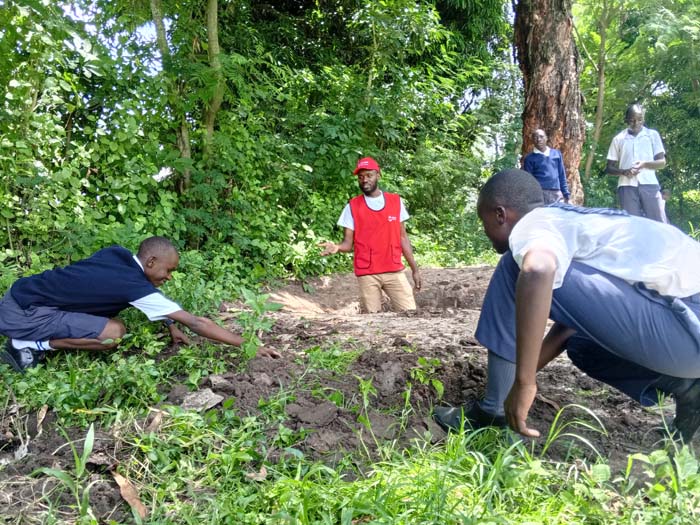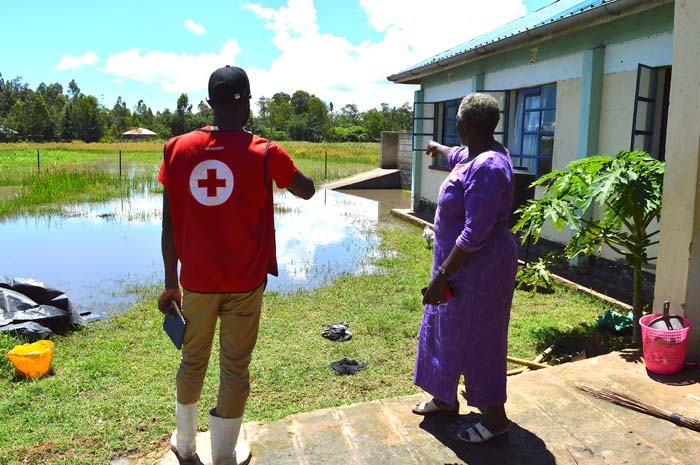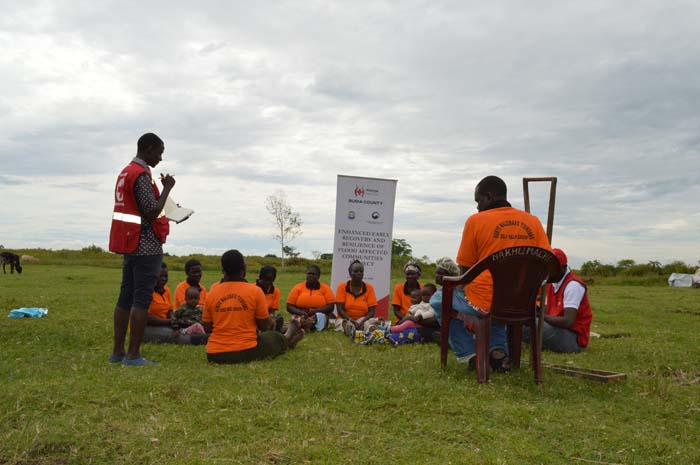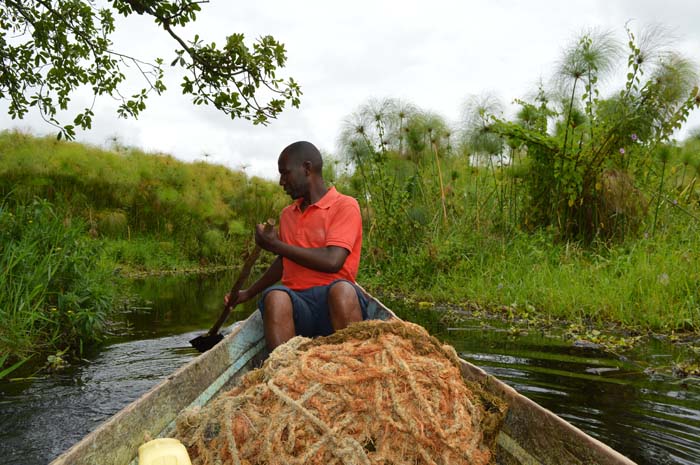By Victor Ogalle
Since 2023, persistent rains have continued to turn parts of Western Kenya into water bodies, sweeping away homes and farms and displacing thousands of families. By May 2024, the government reported over 229 deaths and about 234,000 people displaced nationwide. In the entire Western Kenya region Busia and Homa Bay were among the worst-hit counties. During the same period more than 1,700 families in Karachuonyo, Homa Bay County at the start of the March April May rains. By mid-June an estimation of 54,000 people were still living in temporary camps across the western counties.
In Budalang’i, Busia county, families wade through waist-deep floodwater while others use wooden boats to move from one place another. The effects of flooding was so devastating with the National Disaster Management Authority reporting that that nearly 27,700 acres of cropland had been destroyed and about 4,800 livestock drowned by the floods, forcing locals to be confined into camps as displaced persons namely in Runyu, Rukala, Khumwanda, Budala and Mukhadundu camps.

Another impending danger pertains on the issue of water and sanitation where shallow wells and latrines were contaminated endangering public health leaving another larger risk of locals contracting cholera, malaria and stomach related illnesses especially among the displaced with pregnant mothers being the most affected.
According to Paul Were, a clinical officer and facility in charge at the Rukala Health Centre he vividly remember the flooding effects from 2020 after River Nzoia a tributary of Lake Victoria, that burst its banks displacing thousands with an influx on the numbers seeking medica attention at the facility.
“After the displacements we could barely rest, patients kept trickling in, woth most cases rekated to the floods. This facility had also been affected by rain water that led to the corroding of the roof but thanks to the Kenya Red Cross Society it is being repaired.” asserts Were.
It is in the same vein that locals are developing coping mechanisms as well as working together with aid agencies to restore livelihoods and their surroundings with emphasis on environmental conservation.

Through its flagship Community Managed Disaster Risk Reduction (CMDRR) the Kenya Red Cross Society began a tree planting exercise in Budalangi Sub-County, Busia County with an aim of planting 500 trees including bamboo trees aimed towards enhancing environmental resilience and disaster preparedness through the theme Enhanced Early Recovery and Resilience of Flood-Affected Communities.
In partnership with the county government of Busia the tree planting exercise was launched at the Sibuka Primary School in Bunyala North Ward, Budalangi Sub-County.This initiative is part of a long term initiative aimed to mitigate the perennial risks of flooding within the Bunyala ecosystem by reducing the flow of water, reduction of soil erosion and absorbing rainfall.
Present at the launch Kenya Red Cross Society Head of Region, Western Kenya Maurice Anyango, lauded the success of the CMDRR program in Busia County and assured the community of continued support.
“Currently Budalang’i is beimg affected by the swelling of the lake. We are proud of the work done under CMDRR and are committed to engaging other partners to sustain these community interventions once the program phases out,” he said.
This trees will go a long way especially in preventing the soil erosion. Every student was given a tree to look after and that will help in the furture to imcrease the forest cover in Budalang’i,” adds Regina Wasike a student at St Triza Mundere Girls.
Through funding from the people of South Korea through the Korean Embassy the flood recovery and resilience project that commenced in July 2024 targetting Homabay and Busia Counties seeks to help communities living along the Lake Victoria ecosystem rebuild their lives working in line with county governments and community volunteers. The aid agency has already embarked on repairing what the waters destroyed, delivering seeds, farm tools and fishing nets to restart livelihoods, repair water wells and latrines for clean drinking water, and send medicines and supplies to affected clinics. As well as training villagers on flood early-warning and evacuation to avert immense future effects of floods.

“I have been fishing on Lake Victoria for close to 10 years now but I did not have the right gear. After being supported by KRCS I can now notice the difference in my daily catch, as I was given the required fishing gear,” notes Wilbert Rakamba a fisherfolk at Runyu beach.
Margaret Atieno is a beneficiary of cash transfer that boosted her fish vending business having been affected by the floods in 2020 that made her a pauper.
“I woke up one morning and everything had been swept away. I actually fell sick for a week as I was in disbelief of what had happened.Kenya Red Cross came in handy in offering me a cash transfer that I invested back into the business and now I am very much ok,” recalls Margaret.
“We have been working closely with the community to ensure they do not suffer as they did previously by strengthening early-warning systems, reliable water infrastructure, and empowering communities,”added Elizabeth Aballa the Project Officer.
A total of 15 schools including Namabusi and Budalang’i secondary schools, Musoma, Buluani, Maduwa, Runyu, Makunda, Rugunga, Rwambua and Iranya and Siginga primary schools were worst hit by the floods. As project implementors The learners of this institutions were given hydrophilic trees by KRCS to plant in their school compound and fruit trees at their homes.
Busia County Executive Committee Member for Public Service Management, Administration and Governance, Mrs. Pamela Awori, emphasized the long-term economic and environmental value of the tree species selected.
“The bamboo trees planted today are not only instrumental in flood control but are also highly sought after and will serve as valuable raw materials for the upcoming County Industrial Park while the fruit trees, on the other hand, may become an important food source for the community during hunger crises,” she said.
Budalangi Assistant County Commissioner , Everline Aton, who also graced the occasion, called on residents to take ownership of the initiative by nurturing and preserving the trees. She further lauded KRCS for the project saying the impact of the environmental exercise will go a long way in conserving the Bunyala Ecosystem.. This climatic change intervention is in line with the Busia County Climate Change Action Plan (2023- 2027) that focuses on climate change adaptation and mitigation actions, a requirement by the National Climate Change Act, 2016, and the Busia County Climate Change Act, 2021.During its formation Over 250 stakeholder’s representatives from the County Climate Change Coordination Unit, community members and the county technical team, civil society including vulnerable groups were consulted.


